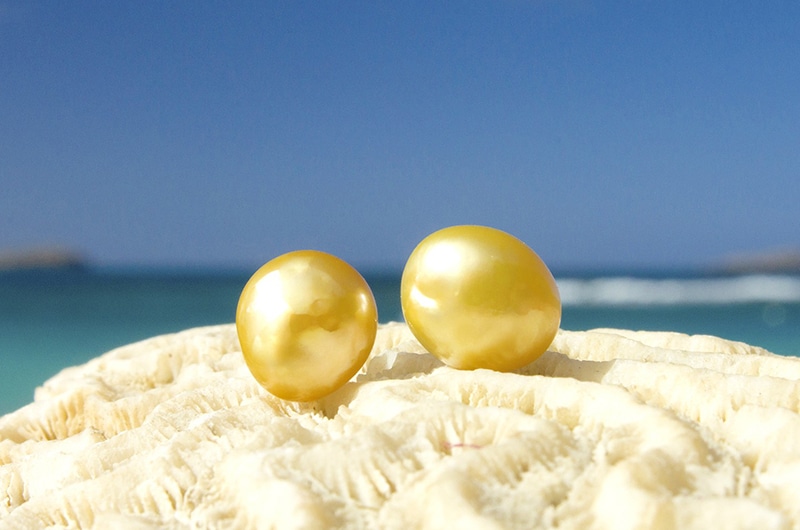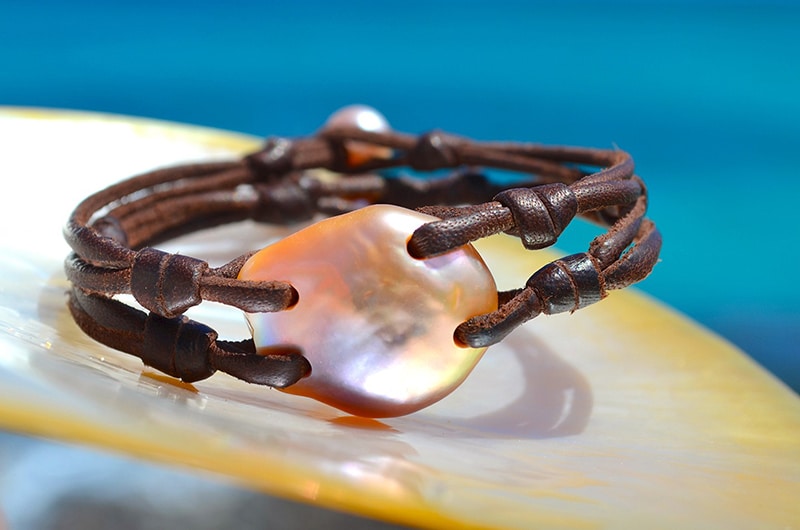You've added...
The Keshi pearl

KNOW EVERYTHING
Keshis, also known as “Keishi,” are pearls without a nucleus, meaning they lack a core. This type of pearl can form either naturally or through human intervention. In a natural environment, the formation of these pearls is accidental. Indeed, a keshi is produced by an oyster that has rejected the nucleus after grafting. Keshi pearls are organic pearls with irregular shapes, making them baroque pearls. The term “keshi,” of Japanese origin, means “Clove.”
Read more
How Are Keshi Pearls Formed?
However, if the oyster retains only the graft and rejects the nucleus, this graft produces layers of nacre, resulting in the formation of a keshi pearl! Keshis are thus nacreous concretions. The process is fascinating, and keshis are truly wonderful.
What Are the Different Types of Keshis?
What Are the Differences Between a Pearl and a Keshi?
Although their value is not as high as that of pearls, keshis are considered lucky charms (often called "Tears of Heaven" or "Tears of the Gods") and are now prominent pieces in keshi pearl jewelry (necklaces, bracelets, earrings…). They are appreciated for their high luster, often exceeding that of regular pearls!
Regarding the Cultivation of Keshis
Several pearl farmers produce keshis. Pearl farming involves cultivating, maintaining favorable conditions, and caring for pearl oysters to produce quality pearls according to demand. Keshi pearl farming requires experience and expertise, as oysters are very delicate.
In fact, 10% of oysters die after grafting, another 10% within the following three years, and only a third will reject the nucleus and nacre to form a keshi pearl. Only 1% yield perfect pearls! Pearl oyster farming is practiced worldwide. It is possible to obtain Tahitian keshi pearls or freshwater keshi pearls in any region, such as in a pearl farm in French Polynesia, Akoya farms in Japan, freshwater farms in China, or pearl farms in Australia, where millions of mollusks are cultivated.
Generally, to obtain cultured pearls, it takes between 18 months and 5 years. The process is lengthy. Keshi production in different pearl farms varies depending on certain factors. It is essential to consider the location of cultivation, the type of water (saltwater, freshwater, lakes...), as well as fertilization techniques.
How to Differentiate a Keshi from a Pearl?
To distinguish between them, it may sometimes be necessary to examine the structure of the pearl using X-rays. X-rays can penetrate the structure to verify the presence of a nucleus or any traces left by the graft.
Can I Find Affordable and Quality Keshi Pearls?
These baroque pearls are unique and stunning. They are also available at more reasonable prices. With an endless variety of shapes and colors, you’re sure to find an affordable keshi that suits your style!

